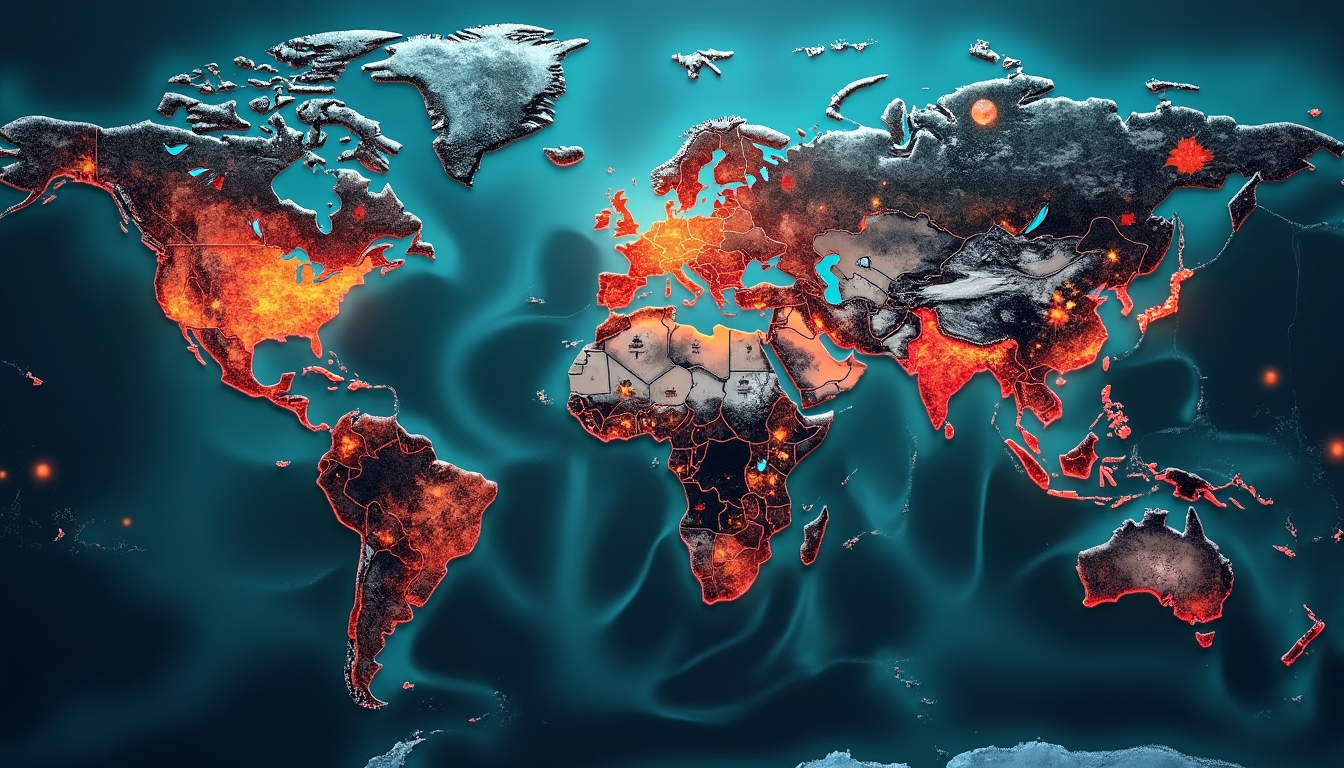The Geology of Ore Deposits: From Earth's Core to Economic Concentrations
The formation of ore deposits represents a complex geological process with numerous contributing variables. Geologists analyse intricate interactions between rock and fluid compositions, temperature, pressure, pH, structure, and time to understand how mineral concentrations develop. These interactions create a sophisticated mechanism that transforms average crustal rock into economically viable mineral resources.
Earth's Fundamental Structure and Mineral Potential
The Earth comprises three primary geological layers: the core, mantle, and crust. Each layer plays a distinctive role in mineral formation and concentration processes. The core consists of metallic iron and nickel, with a solid inner core and liquid outer core. The mantle surrounds the core and contains hot, viscous rock capable of gradual movement.
Crustal Composition and Metal Distribution
The Earth's crust represents the outermost layer, ranging from 5 to 70 kilometres thick, with an average thickness of approximately 30 kilometres. This thin layer contains substantially lower metal concentrations compared to other geological layers. The crust actually floats atop the mantle due to significant density differences.
Metal Concentration Challenges
Most minerals used by human societies originate from mining activities conducted within the Earth's crust. However, achieving economic mineral extraction presents substantial challenges. Average crustal metal concentrations remain exceedingly low, requiring significant natural concentration mechanisms.
Concentration Requirements for Economic Viability
Transforming average crustal rock into economically viable mineral deposits demands substantial upgrading processes. Different metals require varying concentration factors to become profitable mining targets. For instance:
- Copper requires concentration from an average of 55 grams per metric ton to approximately 0.5-3% for economic extraction
- Lead necessitates upgrading from minimal crustal quantities to around 3% concentration
- Gold requires extraordinary concentration mechanisms to become economically recoverable
Plate Tectonics: Driving Ore Formation
Plate tectonics represents the fundamental mechanism responsible for ore deposit formation. Approximately 15 tectonic plates move across the Earth's surface, driven by underlying mantle convection currents. These plate interactions create critical geological environments conducive to mineral concentration.
Mechanisms of Plate Movement
Tectonic plate movements occur through several mechanisms:
- Divergent boundaries where plates separate
- Convergent boundaries where plates collide
- Transform boundaries where plates slide past each other
The most significant mineral-rich regions typically occur along plate boundaries, particularly subduction zones.
Mineral Concentration Processes
Natural mineral concentration involves two primary mechanisms:
- Partial melting of crustal or mantle rock
- Magma transport and cooling processes
These mechanisms allow metals to concentrate from minimal crustal abundances to economically viable levels. Partial melting occurs through subduction, crustal thickening, or magma injection, providing the initial concentrating mechanism.
Magma Transport and Crystallisation
As magma rises through the crust, it undergoes progressive cooling and crystallisation. Different minerals crystallise at varying temperatures, enabling metal partitioning into specific phases. This process allows economic metal concentrations to develop through natural sorting mechanisms.
Hydrothermal Ore Deposit Classifications
Geologists categorise hydrothermal ore deposits based on formation depths:
- Deep crustal deposits (10-50 kilometres depth)
- Mesothermal deposits (1-10 kilometres depth)
- Epithermal deposits (less than 1 kilometre depth)
- Surface deposits
Conclusion: Complexity of Ore Formation
Understanding ore deposit formation requires comprehensive knowledge of geological processes. Investors and mining professionals must recognise the intricate mechanisms that transform average crustal rock into economically viable mineral resources. Continued technological advancements in exploration techniques will further enhance our ability to identify and extract these valuable mineral concentrations.
Ready to Dive into the World of Ore and Mineral Discoveries?
Unlock the potential of strategic investments with Discovery Alert’s real-time notifications. Stay informed about the latest significant mineral discoveries and gain insights that can transform your decision-making process. Whether you're new to investing or a seasoned trader, our AI-driven alerts and comprehensive geological analyses will guide you through the complexities of mineral exploration. Start your 30-day free trial now and experience the advantage firsthand with Discovery Alert.




